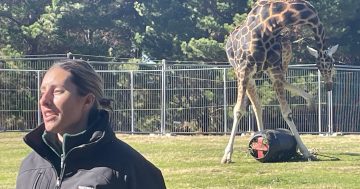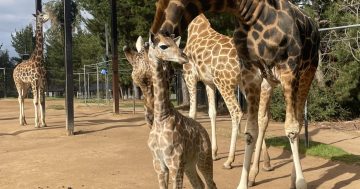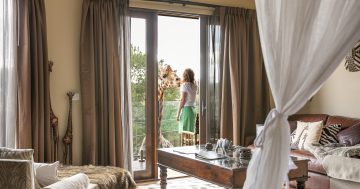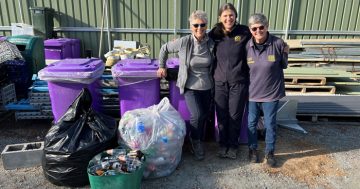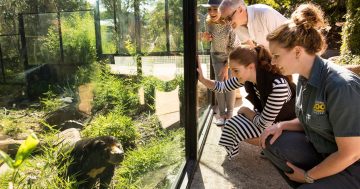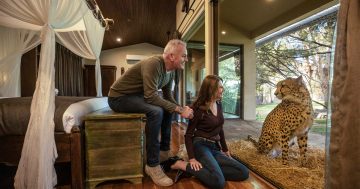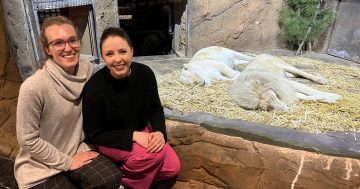
National Zoo & Aquarium wildlife supervisor Sophie Dentrinos says some of the animals are finding it a bit strange without any visitors during COVID-19 lockdown. Photo: Dominic Giannini.
If your lockdown bubble has been getting a little, well, mundane, how does sharing sleeping quarters with a tiger who talks in his sleep sound?
That’s the reality for the staff at the National Zoo & Aquarium, whose lockdown bubble includes lions, tigers, bears and a wide variety of other creatures.
Wildlife supervisor Sophie Dentrinos says while it is a bit of a strange situation, the zoo was well prepared for a COVID-19 outbreak in Canberra.
She says the team had been closely monitoring the situation in Sydney, and on the day the lockdown came into effect, it was able to move quickly to create rotating teams to lessen the effects of a possible infection within the staff.
Those who were willing and able to stay onsite were moved into the five-star accommodation at Jamala Wildlife Lodge.
“There definitely hasn’t been any complaints about food from those guys,” says Sophie.
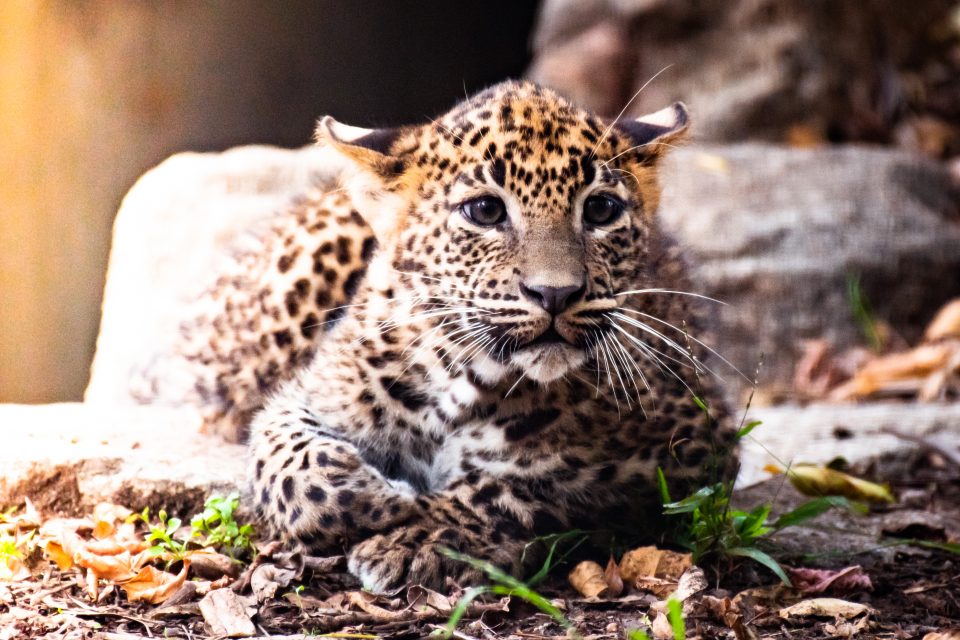



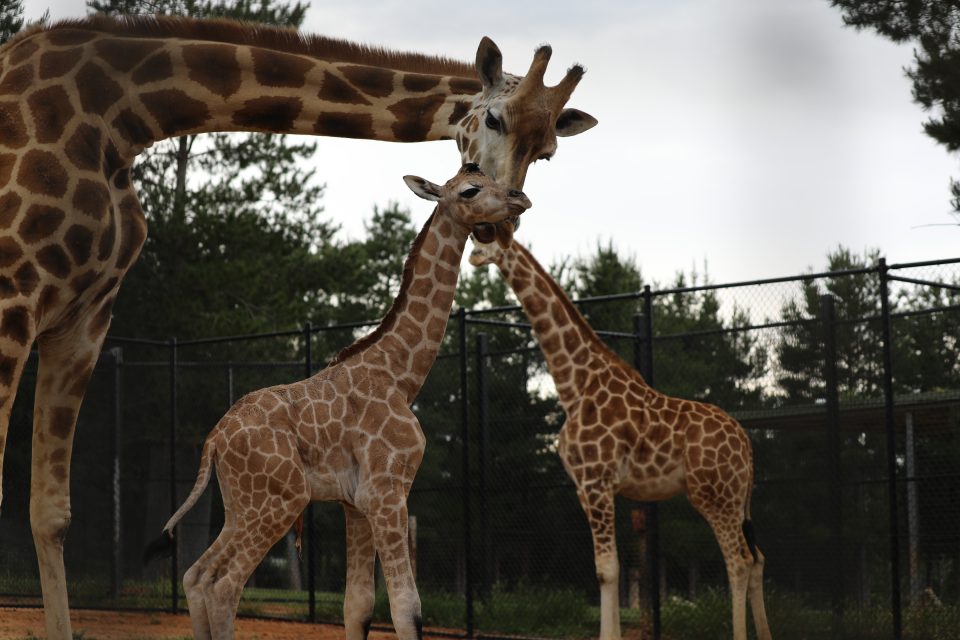
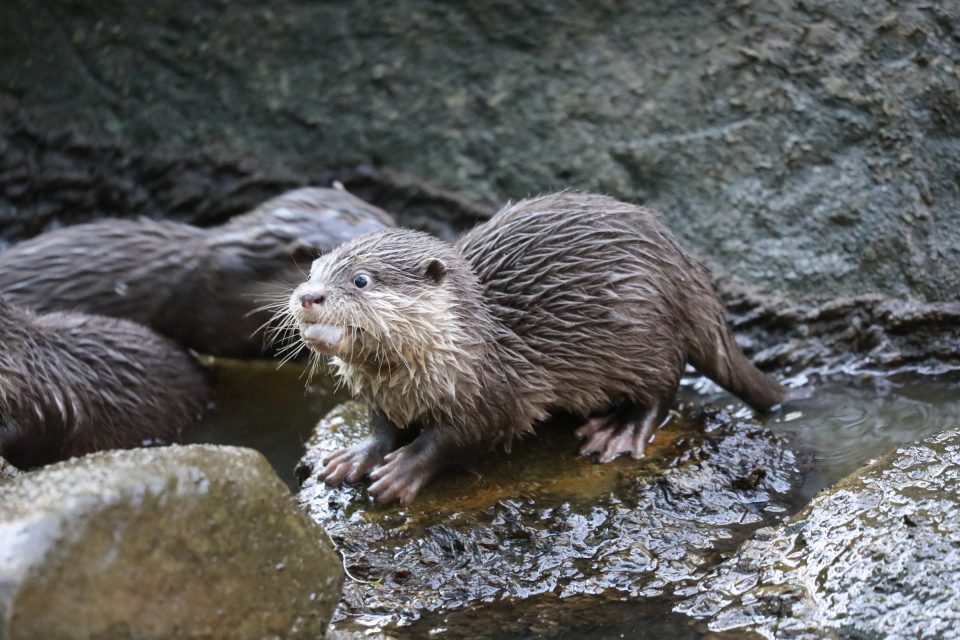

However, she’s heard reports of a very excited tiger who loves to play with his enrichment toys by smashing them into a window in the middle of the night.
That’s the same tiger who chatters in his sleep.
“It’s been pretty cool for them to see the animals in ways we normally don’t get to,” says Sophie.
Despite the luxury accommodation, a month of lockdown with only the zoo to walk around has meant many hours spent doing puzzles and yoga on their days off.
With a husband and two kids at home, Sophie is part of one of the offsite teams who work on a rotating basis.
“We have a limited amount of skilled keepers and we can’t just bring anyone in to look after dangerous animals for obvious reasons,” she says.
On Friday, 10 September, ACT Chief Health Officer Dr Kerryn Coleman’s daily shoutout was to all those who look after “our furry friends”.
For the zookeepers and staff at the zoo, life has had to go on to ensure the animals are safe, happy, busy, fed and clean.
But that’s not to say the animals haven’t noticed a difference.
Sophie says the animals tend to pay the keepers much more attention when they are walking past their enclosures because they’re getting so few visitors compared to normal.
“Some of them really miss that company, especially the animals that we use for our encounters,” she says.
“They certainly are getting more attention from their keepers in return because they’re so used to that human connection.”
The other noticeable difference for Sophie has been the lack of noise without visitors.
“You can really hear the animal sounds more than usual, and the animals can hear each other, too,” she says.
A lot of work is going into ensuring the animals don’t become accustomed to new routines so they’re still being put into their public-facing enclosures at the usual times and being locked out there while the back areas are cleaned.
“We’re still going through the motions of an open zoo,” says Sophie.
For example, the giraffes have an encounter at lunchtime so they are still being fed in the open enclosure at the usual time.
Sophie says interacting with the animals is already a huge part of a keeper’s role so they’re simply ramping up this element of the day.
She also says strict procedures are in place, including the wearing of face masks around the animals so none of them are put at risk.
However, both the animals and their keepers are looking forward to the day when visitors can return to the zoo.












